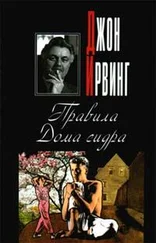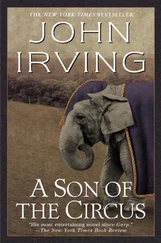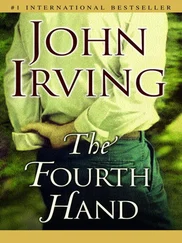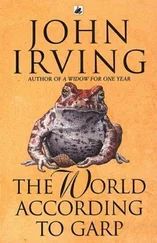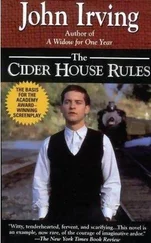My guess was that the photo had been taken on a family ski trip—everyone was dressed for skiing, and Atkins even wore a ski hat. They’d brought the dog skiing ! I marveled.
The kids looked tanned—the wife, too. Remembering how fair-skinned Tom was, he probably had to be careful about the sun; thus I saw nothing amiss about Tom not being tanned. (Knowing Atkins, he’d probably heeded the earliest alarms about skin cancer and the importance of wearing sunscreen—he’d always been a boy who had heeded every alarm.)
But there was something silvery about Tom’s skin color, I thought—not that I could see much of his face, because Atkins’s stupid ski hat covered his eyebrows. Yet I could tell—just from that partial view of poor Tom’s face—that he’d lost weight. Quite a lot of weight, I speculated, but, given the ski clothes, I couldn’t really tell. Maybe Atkins had always been a bit hollow-cheeked.
Yet I’d stared at this belated Christmas card for the longest time. There was a look I hadn’t seen before in the expression of Tom’s wife. How was it possible, in a single expression, to convey a fear of both the unknown and the known?
Mrs. Atkins’s expression reminded me of that line in Madame Bovary —it’s at the end of chapter 6. (The one that goes like a dart to a bull’s-eye, or to your heart—“it seemed quite inconceivable that this calm life of hers could really be the happiness of which she used to dream.”) Tom’s wife didn’t look afraid—she seemed terrified ! But what could possibly have frightened her so?
And where was the smile that the Tom Atkins I knew could rarely suppress for long? Atkins had this goofy, openmouthed smile—with lots of teeth and his tongue showing. But poor Tom had tightly closed his mouth—like a kid who’s trying to conceal a wad of chewing gum from a teacher, or like someone who knows his breath is bad.
For some reason, I’d shown the Atkins family photo to Elaine. “You remember Atkins,” I said, handing her the late-arriving Christmas card.
“Poor Tom,” Elaine automatically said; we both laughed, but Elaine stopped laughing when she had a look at the photograph. “What’s the matter with him—what’s he got in his mouth ?” she asked.
“I don’t know,” I said.
“He’s got something in his mouth, Billy—he doesn’t want anyone to see it,” Elaine told me. “And what’s the matter with those children?”
“The children ?” I asked her. I’d not noticed that anything was wrong with the kids.
“They look like they’ve been crying,” Elaine explained. “ Jesus —it looks like they cry all the time!”
“Let me see that,” I said, taking the photo. The children looked okay to me. “Atkins used to cry a lot,” I told Elaine. “He was a real crybaby—maybe the kids got it from Tom.”
“Come on, Billy—something’s not normal. I mean with all of them,” Elaine said.
“The dog looks normal,” I said. (I was just fooling around.)
“I’m not talking about the dog, Billy,” Elaine said.
IF YOUR PASSAGE THROUGH the Reagan years (1981–89) was unclouded by watching someone you knew die of AIDS, then you don’t remember those years (or Ronald Reagan) the way I do. What a decade it was—and we would have that horseback-riding B actor in charge for most of it! (For seven of the eight years he was president, Reagan would not say the AIDS word.) Those years have been blurred by the passage of time, and by the conscious and unconscious forgetting of the worst details. Some decades slip by, others drag on; what made the eighties last forever was that my friends and lovers kept dying—into the nineties, and beyond. By ’95—in New York, alone—more Americans had died of AIDS than were killed in Vietnam.
It was some months after that February conversation Elaine and I had about the Atkins family photo—I know it was later in ’81—when Larry’s young lover Russell got sick. (I felt awful that I’d dismissed Russell as a Wall Street guy; I’d called him a poetaster, too.)
I was a snob; I used to turn up my nose at the patrons Larry surrounded himself with. But Larry was a poet—poets don’t make any money. Why shouldn’t poets, and other artists, have patrons?
PCP was the big killer—a pneumonia ( Pneumocystis carinii ). In young Russell’s case, as it often was, this pneumonia was the first presentation of AIDS—a young and otherwise healthy-looking guy with a cough (or shortness of breath) and a fever. It was the X-ray that didn’t look great—in the parlance of radiologists and doctors, a “whiteout.” Yet there was no suspicion of the disease; there was, at first, the phase of not getting better on antibiotics—finally, there was a biopsy (or lung lavage), which showed the cause to be PCP, that insidious pneumonia. They usually put you on Bactrim; that’s what Russell was taking. Russell was the first AIDS patient I watched waste away—and, don’t forget, Russell had money and he had Larry.
Many writers who knew Larry saw him as spoiled and self-centered—even pompous. I shamefully include my former self in this category of Lawrence Upton observers. But Larry was one of those people who improve in a crisis.
“It should be me, Bill,” Larry told me when I first paid a visit to Russell. “I’ve had a life—Russell is just beginning his.” Russell was placed in hospice care in his own magnificent Chelsea brownstone; he had his own nurse. All this was new to me then—that Russell had chosen not to go on a breathing machine allowed him to be cared for at home. (Intubating at home is problematic; it’s easier to hook a person up to a ventilator in a hospital.) I later saw and remembered that gob of Xylocaine jelly on the tip of the endotracheal tube, but not in Russell’s case; he wasn’t intubated, not at home.
I remember Larry feeding Russell. I could see the cheesy patches of Candida in Russell’s mouth, and his white-coated tongue.
Russell had been a beautiful young man; his face would soon be disfigured with Kaposi’s sarcoma lesions. A violet-colored lesion dangled from one of Russell’s eyebrows where it resembled a fleshy, misplaced earlobe; another purplish lesion drooped from Russell’s nose. (The latter was so strikingly prominent that Russell later chose to hide it behind a bandanna.) Larry told me that Russell referred to himself as “the turkey”—because of the Kaposi’s sarcoma lesions.
“Why are they so young, Bill?” Larry kept asking me—when “they,” the sheer number of young men who were dying in New York, had made us realize that Russell was just the beginning.
We saw Russell age, in just a few months—his hair thinned, his skin turned leaden, he was often covered with a cool-to-the-touch film of sweat, and his fevers went on forever. The Candida went down his throat, into the esophagus; Russell had difficulty swallowing, and his lips were crusted white and fissured. The lymph nodes in his neck bulged. He could scarcely breathe, but Russell refused to go on a ventilator (or to a hospital); in the end, he faked taking the Bactrim—Larry would find the tablets scattered in Russell’s bed.
Russell died in Larry’s arms; I’m sure Larry wished it had been the other way around. (“He weighed nothing,” Larry said.) By then, Larry and I were already visiting friends at St. Vincent’s Hospital. As Larry predicted, it would get so crowded at St. Vincent’s that you couldn’t go to visit a friend, or a former lover, and not encounter someone else you knew. You would glance in a doorway, and there was someone you hadn’t known was sick; in more than one instance, Larry claimed, he’d spotted someone he hadn’t known was gay !
Читать дальше


